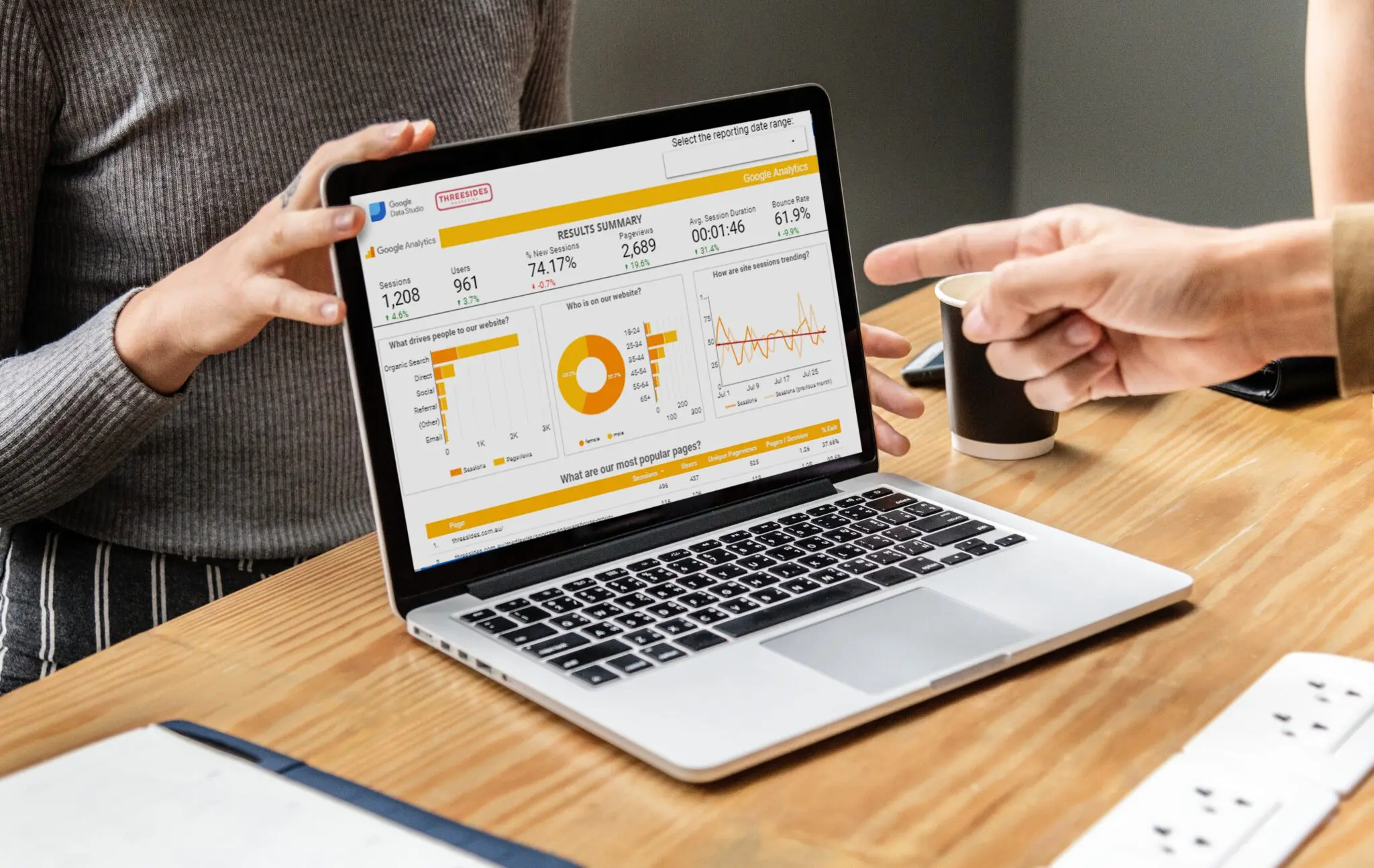[et_pb_section fb_built=”1″ _builder_version=”3.22.3″][et_pb_row _builder_version=”3.25″ background_size=”initial” background_position=”top_left” background_repeat=”repeat”][et_pb_column type=”4_4″ _builder_version=”3.25″ custom_padding=”|||” custom_padding__hover=”|||”][et_pb_text _builder_version=”3.25.4″ background_size=”initial” background_position=”top_left” background_repeat=”repeat” custom_padding=”||1px|||”]
Making sense of your organisation’s marketing metrics can be overwhelming and often difficult to understand. Chances are, at some point, you and your team’s valuable time has been consumed with collating data from the different platforms, formatting and filtering multiple spreadsheets and documents, emailing back and forth while struggling to reach clear conclusions.
How can you quickly find answers to the pertinent marketing questions and make more informed decisions without spending hours crunching numbers in spreadsheets?
Enter Google Data Studio.
Google Data Studio (GDS) is a free cloud-based data visualisation tool that can integrate all your marketing data into a single automated, customisable, easy to understand and interactive report. GDS is constantly releasing new updates and features while offering the scalability, reliability and support one can expect from a Google product.
Here are just a few reasons why your business should use GDS:
unified data

GDS integrates with a plethora of data sources including Google Analytics, Google Ads, Facebook, Instagram, LinkedIn, Twitter, MailChimp, CRM platforms, sales data and more. If the data lies in a spreadsheet, it can be integrated. The ability to gather and compare data from all your different marketing sources will not only save time but help provide actionable information of your marketing and sales performance.
Interactive and automated
Nothing is static in the digital world, so your reporting shouldn’t be either. Having beautiful graphs and tables is great, but what sets GDS apart from the rest is the report is live, interactive and updated in real time. Choose your date range, select your drop-down filter and watch the report quickly update in front of your eyes. No more spending hours creating monthly, quarterly or yearly reports.
Data storytelling

Each GDS dashboard starts as a blank canvas where you can easily add in tables, scorecards, pie charts, graphs, text boxes, maps, etc without any coding, and lay them out in a visually appealing way to tell a story of how your marketing efforts impact your organisation’s objectives.
Sharing and collaboration

Just like Google Docs and Sheets, GDS is stored and protected in the cloud that lends itself to collaborative editing, so your whole team can access and work on the dashboard at the same time across different devices with ease. Sharing is just as easy, you can set permissions, schedule the report to be delivered to your email or if you’re old school, even download it as a PDF and print it.
And there you have it. GDS can take reporting from a lengthy tedious task, to a process that’s quick and easy. GDS provides your marketing insights direct to you in just a few clicks, enabling you to make informed business decisions.
If you’re interested in fostering a more data-driven approach to decision-making, contact us for information on how GDS can help your organisation.
[/et_pb_text][/et_pb_column][/et_pb_row][/et_pb_section][et_pb_section fb_built=”1″ fullwidth=”on” _builder_version=”3.24″][/et_pb_section]

